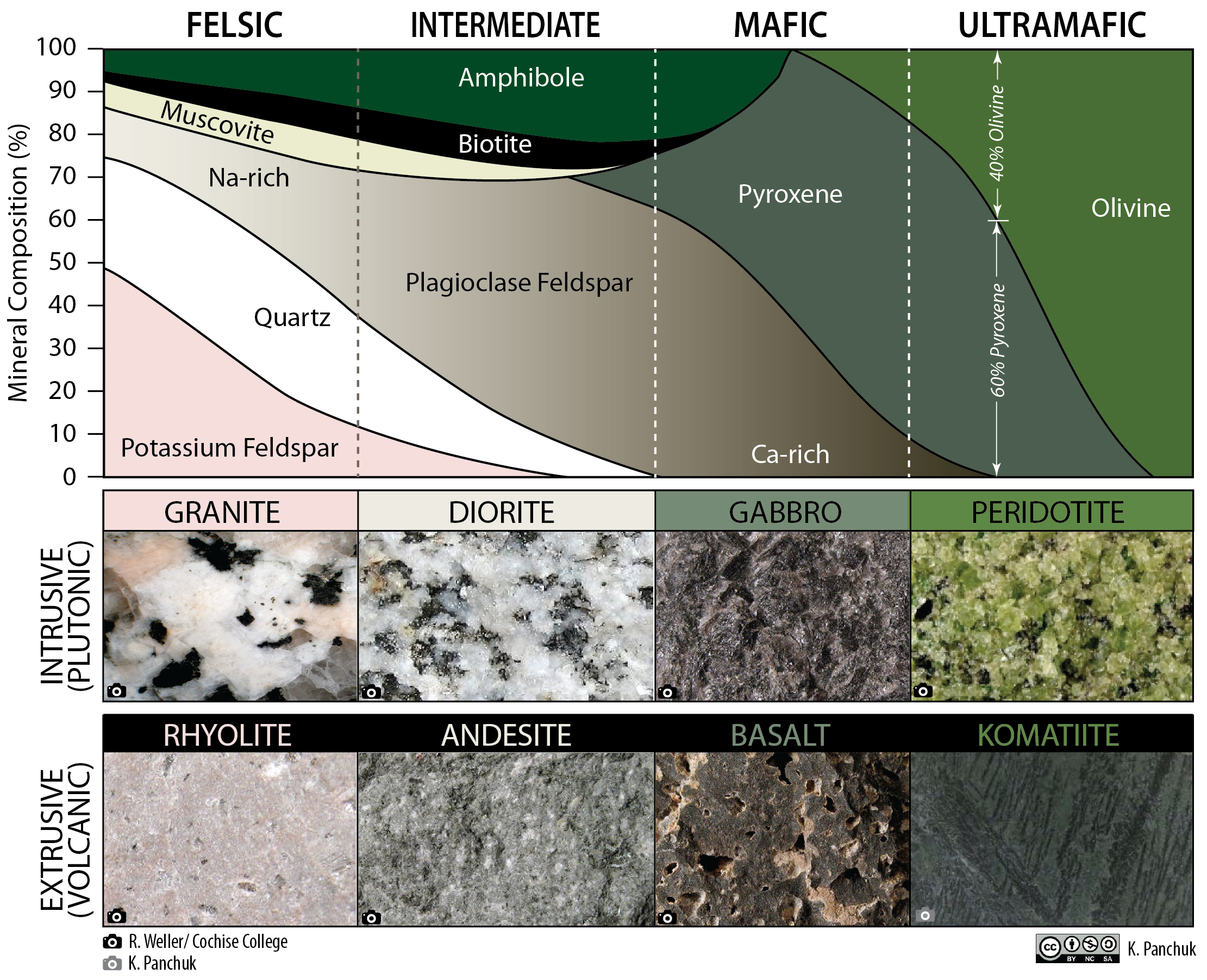Texture describes the appearance based on its size shape and the arrangement of its interlocking crystals. The other factors are if they are vesicular coarse fine grained.

General Classification Of Igneous Rocks
Terms in this set 8 Texture and compositionare two characteristics used to classify igneous rocks.

. Such factors are controlled by the process which formed the rock. Igneous rocks are either intrusive or extrusive. Such factors are controlled by the process which formed the rock.
CLASSIFICATION The classification of rocks is based on two criteria TEXTURE and COMPOSITION. These include color crystal form hardness density luster and cleavage. This video describes how hot magma is converted to igneous rocks one of the three major groups of rocks on Earth.
CLASSIFICATION The classification of rocks is based on two criteria TEXTURE and COMPOSITION. And 2 composition often determined by what the actual minerals are. Most geologists first determine the texture and then the composition and with these two bits of information fit the rock into an established igneous-rock classification scheme of which there.
What two characteristics are used to classify igneous rocks. Volcanic rocks break down into two more categories. Igenous rocks are classified by.
We explain how geologists use texture grain size to identify if the magma that formed the rocks cooled at Earths surface or deep below ground. There are three kinds of rock. The most abundant rock in the earths crust is none other than the igneous rock type.
What are the 6 characteristics of rocks. What are the types of rock. Two main characteristics are used to classify igneous rocks.
Color of igneous rocks may be light or dark whereas the crystal size is either small or large based on how crystallization process takes place. The texture has to do with the sizes and shapes of mineral grains and other constituents in a rock and how these sizes and shapes relate to each other. Intrusive and extrusive factors of an igneous rock classify them.
What 3 characteristics do geologists use to identify rocks. 1 texture the size of the mineral grains in the rock. The prime characteristics of igneous rocks used for identification purposes are color and size of crystals.
The composition classes of igneous rocks are based on the proportions of light and dark minerals in the rock. Igneous rocks are classified on the basis of their composition and their texture. Two main characteristics are used to classify igneous rocks.
CLASSIFICATION The classification of rocks is based on two criteria TEXTURE and COMPOSITION. We then discuss how we can use simple observations of the color of the minerals in the rocks to. As we just learned there are two main types of igneous rocks.
CLASSIFICATION The classification of rocks is based on two criteria TEXTURE and COMPOSITION. Igneous sedimentary and metamorphic. Intrusive rocks also known as plutonic rocks and extrusive rocks also known as volcanic rocks.
And 2 composition often determined by what the actual minerals are. Igneous rocks form when molten rock magma or lava cools and solidifies. Such factors are controlled by the process which formed the rock.
Such factors are controlled by the process which formed the rock. A lava flows and b tephra pyroclastic material. The texture has to do with the sizes and shapes of mineral grains and other constituents in a rock and how these sizes and shapes relate to each other.
The texture has to do with the sizes and shapes of mineral grains and other constituents in a rock and how these sizes and shapes relate to each other. 1 texture the size of the mineral grains in the rock. On what basis are igneous rocks classified quizlet.
Part 2 Describe two ways that geologists use to classify igneous rocks. The texture has to do with the sizes and shapes of mineral grains and other constituents in a rock and how these sizes and shapes relate to each other.

7 3 Classification Of Igneous Rocks Physical Geology First University Of Saskatchewan Edition

7 3 Classification Of Igneous Rocks Physical Geology First University Of Saskatchewan Edition

0 Comments